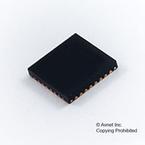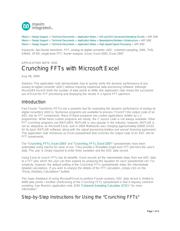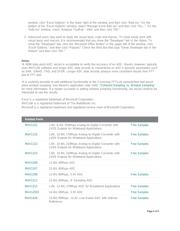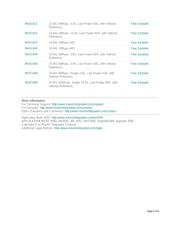下载

Maxim > Design Support > Technical Documents > Application Notes > A/D and D/A Conversion/Sampling Circuits > APP 3292
Maxim > Design Support > Technical Documents > Application Notes > Basestations/Wireless Infrastructure > APP 3292
Maxim > Design Support > Technical Documents > Application Notes > High-Speed Signal Processing > APP 3292
Keywords: fast fourier transform, FFT, analog-to-digital converter, ADC, coherent sampling, SNR, THD,
SINAD, SFDR, single-tone FFT, fourier analysis, Excel, Excel 2003, Excel 2007
APPLICATION NOTE 3292
Crunching FFTs with Microsoft Excel
Aug 06, 2004
Abstract: This application note demonstrates how to quickly verify the dynamic performance of any
analog-to-digital converter (ADC) without requiring expensive data-processing software. Although
Microsoft® Excel® limits the number of data points to 4096, this application note shows the successful
use of Excel for FFT processing and displaying the results in a typical FFT spectrum.
Introduction
Fast Fourier Transforms (FFTs) are a powerful tool for evaluating the dynamic performance of analog-to-
digital converters (ADCs). Numerous programs are available to process ("crunch") the output code of an
ADC into its FFT components. Many of these programs are custom applications written by a C
programmer. While these custom programs are handy, the C source code is not always available. Other
FFT crunching programs use MATLAB®. MATLAB is very popular in the industry; however, MATLAB is
not as ubiquitous as Microsoft Excel, and in 2004 Mathworks was charging approximately $3000 (USD)
for its basic MATLAB software, along with the signal processing toolbox and annual licensing agreement.
This application note introduces an Excel spreadsheet that crunches the output code of an ADC into its
FFT components.
The "Crunching_FFTs_Excel-2003" and "Crunching_FFTs_Excel-2007" spreadsheets have been
automated using macros for ease of use. They provide a formatted single-tone FFT plot from the user's
data. The user is simply required to enter three variables and the ADC data record.
Using Excel to crunch FFTs has its benefits. Excel records all the intermediate steps from raw ADC data
to a FFT plot, which the user can then explore by analyzing the equation for each spreadsheet cell. For
simplicity, however, the default setting of the Crunching FFTs spreadsheets hides the intermediate
detailed calculations. If you wish to analyze the details of the FFT calculation, simply click on the
"Show_Detailed_Calculations" bubble.
The major drawback of using Microsoft Excel to perform Fourier analysis: ADC data record is limited to
4096 data points.¹ Another shortcoming of the Crunching FFTs spreadsheet is that it requires coherent
sampling. See Maxim's application note 3190 "Coherent Sampling Calculator (CSC)" for more
information.²
Step-by-Step Instructions for Using the "Crunching FFTs"
Page 1 of 5







